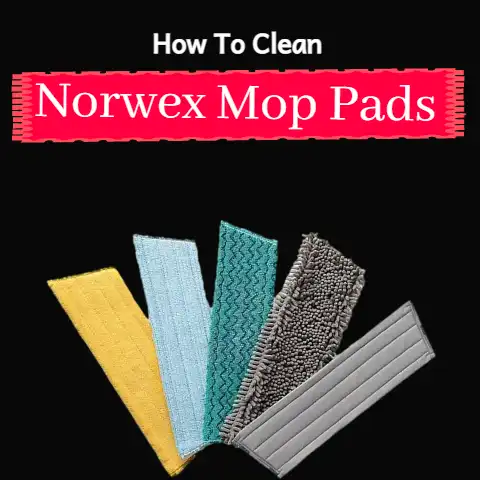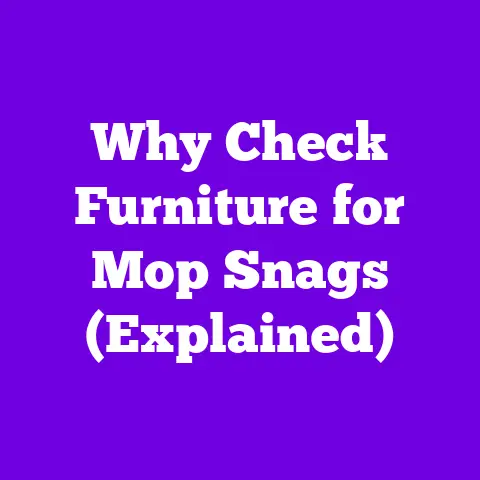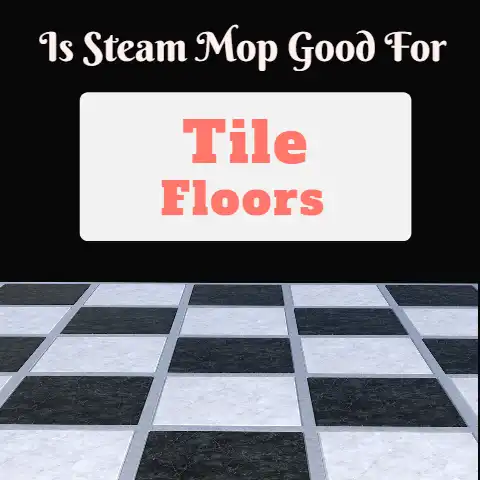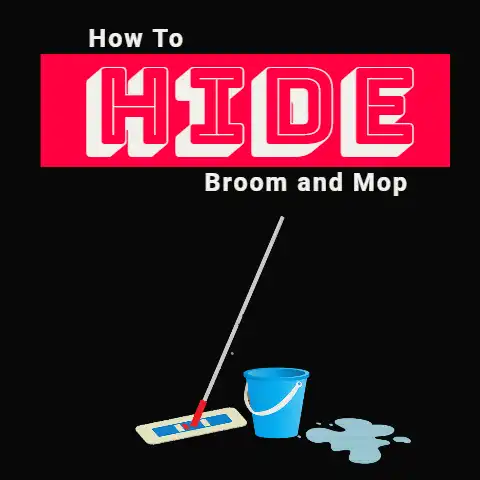Can I Use Mop And Glo On Concrete Floors? (Best Alternative)
Mop and Glo should not be used on concrete floors as it can cause wax buildup and leave a dull appearance. Instead, consider using alternative options such as a microfiber mop, a vinegar solution, or a commercial concrete floor cleaner that are better suited for cleaning and maintaining the appearance of concrete surfaces.
As I walked into my friend’s newly renovated home, the first thing that caught my eye was the stunning concrete floors.
The sleek and modern look was truly impressive.
Intrigued by their beauty, I asked my friend about the maintenance required to keep them looking their best.
That’s when she shared a cautionary tale about using Mop N Glo on concrete floors.
Apparently, after treating her floors with Mop N Glo for two years, they became scuffed and scratched, losing their luster in the process.
Determined to find a solution, I delved into research to uncover alternative cleaning methods for concrete floors.
In this article, we’ll explore whether you can use Mop N Glo on your concrete floors and discuss the damage it may cause.
We’ll also delve into various cleaning techniques such as using ammonia as a solution and employing a floor stripper.
Additionally, we’ll cover how to protect stained concrete after stripping by utilizing a concrete sealer.
Lastly, we’ll provide tips on cleaning and maintaining stained concrete without compromising its finish.
So let’s dive in and discover the best practices for keeping your concrete floors looking fresh and flawless!
Key Takeaways
- Former owner used Mop N Glo on concrete floors for 2 years, resulting in scuffs and scratches
- Suggestions for restoring the floors include using ammonia, a no-scrub floor stripper, and a buffer with a black pad
- It is advised to protect stained concrete after stripping by using a concrete sealer
- Avoid using products like Mop N Glo and Fabuloso on stained concrete floors
Can Mop N Glo be used?
You definitely don’t want to use Mop N Glo on your concrete floors, especially after hearing about the scuffs and scratches it caused.
Mop N Glo is not suitable for concrete floors as it can lead to a buildup of wax and leave behind a dull and dirty appearance.
Instead, opt for a microfiber dust mop to remove dirt and debris daily. For liquid spills, mild soap and water should suffice.
Now let’s discuss the damage caused by Mop N Glo.
Damage caused by Mop N Glo
Despite the former owner’s best intentions, the application of Mop N Glo has left the once pristine floors scuffed and scratched.
The use of this product on wax floors is not recommended due to its tendency to leave behind a sticky residue that attracts dirt and causes damage over time.
Simple floor care should include regular sweeping and mopping with a neutral pH cleaner to avoid further wear on worn floors.
Stubborn stains may require a rejuvenating floor cleaner or a coating solution designed for concrete flooring.
Costly repairs can be avoided by avoiding frequent application of products like Mop N Glo, especially on hardwood flooring.
Moving forward, alternative cleaning methods should be explored to restore the floors without causing further harm.
To explore alternative cleaning methods for restoring the damaged floors without causing further harm or resorting to costly repairs…
Alternative cleaning methods
For a more effective and gentle approach to restoring your scuffed and scratched floors, it’s time to consider alternative cleaning methods that will bring back their former glory without causing any further harm.
Start by using machine washable dust mops for daily dirt removal.
For spills, use a rubber rug backing to prevent stains from seeping into the concrete.
Dust mop regularly with warm water or a gentle soap specifically designed for polished concrete.
Using ammonia as a solution
Revive your worn-out floors with the powerful and rejuvenating properties of ammonia.
This versatile cleaning solution is perfect for concrete floors.
It effectively removes grime, dirt, and contaminants caused by heavy foot traffic.
Unlike products like Mop N Glo, ammonia provides a deep cleanse without leaving behind any residue.
Incorporating ammonia into your floor care routine can save you money on professional service calls.
Using a floor stripper
Let’s dive into the next method: stripping your floors with a no-scrub floor stripper from a janitorial supply house.
This method is effective for removing multiple coats of Mop N Glo and other types of floor coatings. Here’s how it works:
- Prepare the area by removing all furniture and rugs.
- Dilute the floor stripper according to the manufacturer’s instructions.
- Apply the solution evenly using a lambs wool applicator or mop, working in small sections.
- Allow the stripper to sit for the recommended amount of time.
- Use a scrub brush or nylon pad to agitate any stubborn areas or grout lines.
- Rinse thoroughly with clean water and mop up any excess liquid.
This method is suitable for sealed floors, but be cautious when using it on unsealed or polished concrete as it may damage the surface.
After stripping, you can proceed to the next step: using a buffer with black pad to restore your floors.
Using a buffer with black pad
To bring your scuffed and scratched concrete floors back to their former glory, it’s time to break out the buffer with a black pad and work some magic.
The buffer, when used with the right cleaning solution, can effectively remove stubborn contaminants caused by foot traffic and Mop N Glo.
This process will not only restore your floors but also extend their service life.
Now let’s talk about protecting stained concrete after stripping…
Protecting stained concrete after stripping
Preserve the beauty of your freshly stripped and restored stained concrete with a reliable and long-lasting concrete sealer.
To ensure its effectiveness, follow these tips:
- Place doormats at entry points to minimize dirt and contaminants from foot traffic.
- Use a blue painter’s tape to protect baseboards and walls during application.
Clean the surface thoroughly using a mild detergent or neutral pH cleaner. Avoid using a steam mop as it may damage the wax finish.
Remember, applying a concrete sealer is just one step in maintaining your beautiful floors.
Using a concrete sealer
For long-lasting protection, don’t forget to apply a reliable concrete sealer to maintain the beauty of your freshly restored stained floors.
A concrete sealer acts as a barrier against the primary culprit of damage – dirt and dust.
By sealing the surface, you prevent an extended period of dirt buildup and reduce the volume of contaminants tracked onto your floors.
This not only saves you from costly maintenance issues but also keeps your floors looking clean and shiny.
Now, let’s talk about cleaning and maintaining stained concrete floors…
Cleaning and maintaining stained concrete
Keep your stained floors looking their best by following these simple cleaning and maintenance tips:
- Use a mild soap and water solution to clean up spills and remove dirt.
- Avoid using harsh chemicals or abrasive cleaners that can strip away the protective finish.
- For heavy traffic areas, use a correct cleaning solution specifically designed for stained concrete.
To further protect your floors, consider using a microfiber dry dust mop for regular dirt removal.
Now let’s discuss how to effectively use this tool in the next section.
Using a microfiber dry dust mop
To maintain the pristine beauty of your stained concrete, picture this: gently gliding a magic wand across your floors, effortlessly whisking away dirt and dust with each graceful sweep.
That’s the power of a microfiber dry dust mop.
These incredible tools are designed to attract and capture even the tiniest particles without scratching or damaging your wax finish.
Trust me, incorporating a daily routine with a microfiber dry dust mop will keep your stained concrete looking flawless for years to come.
Frequently Asked Questions
Can Mop N Glo be used on stained concrete floors?
No, Mop N Glo should not be used on stained concrete floors. It can cause scuffs and scratches over time.
Instead, opt for a neutral pH cleaner and use a microfiber dry dust mop for regular maintenance.
What kind of damage can Mop N Glo cause to concrete floors?
Using Mop N Glo on concrete floors can cause significant damage.
It creates a build-up that is difficult to remove, leading to scuffs and scratches.
The best way to restore the floors is by stripping them with a no-scrub floor stripper and using a buffer.
What are some alternative cleaning methods for stained concrete floors?
For stained concrete floors, I recommend using a microfiber dry dust mop daily to remove dirt.
When mopping, use a neutral pH cleaner and avoid products like Fabuloso or Mop N Glo.
These methods will help maintain the beauty of your floors without causing damage.
Is ammonia a suitable solution for cleaning stained concrete floors?
Ammonia is not recommended for cleaning stained concrete floors as it can damage the surface.
Instead, I suggest using a neutral pH cleaner and a microfiber dry dust mop for daily maintenance.
Avoid products like Mop N Glo and Fabuloso.
How do you protect stained concrete floors after stripping them?
After stripping stained concrete floors, it is important to protect them. One effective way is to use a concrete sealer.
Applying a quality sealer will help prevent future damage and keep the floors looking their best for longer.
Conclusion
It’s important to avoid using Mop N Glo on concrete floors due to the damage it can cause.
Instead, consider alternative cleaning methods.
For example, you can use ammonia or a no-scrub floor stripper with a buffer and black pad.
Once the floors have been stripped, protect them by applying a concrete sealer.
Additionally, use a neutral pH cleaner for mopping.
It’s important to avoid using products like Fabuloso and Mop N Glo.
By following these steps, you can effectively restore and maintain your concrete floors.





